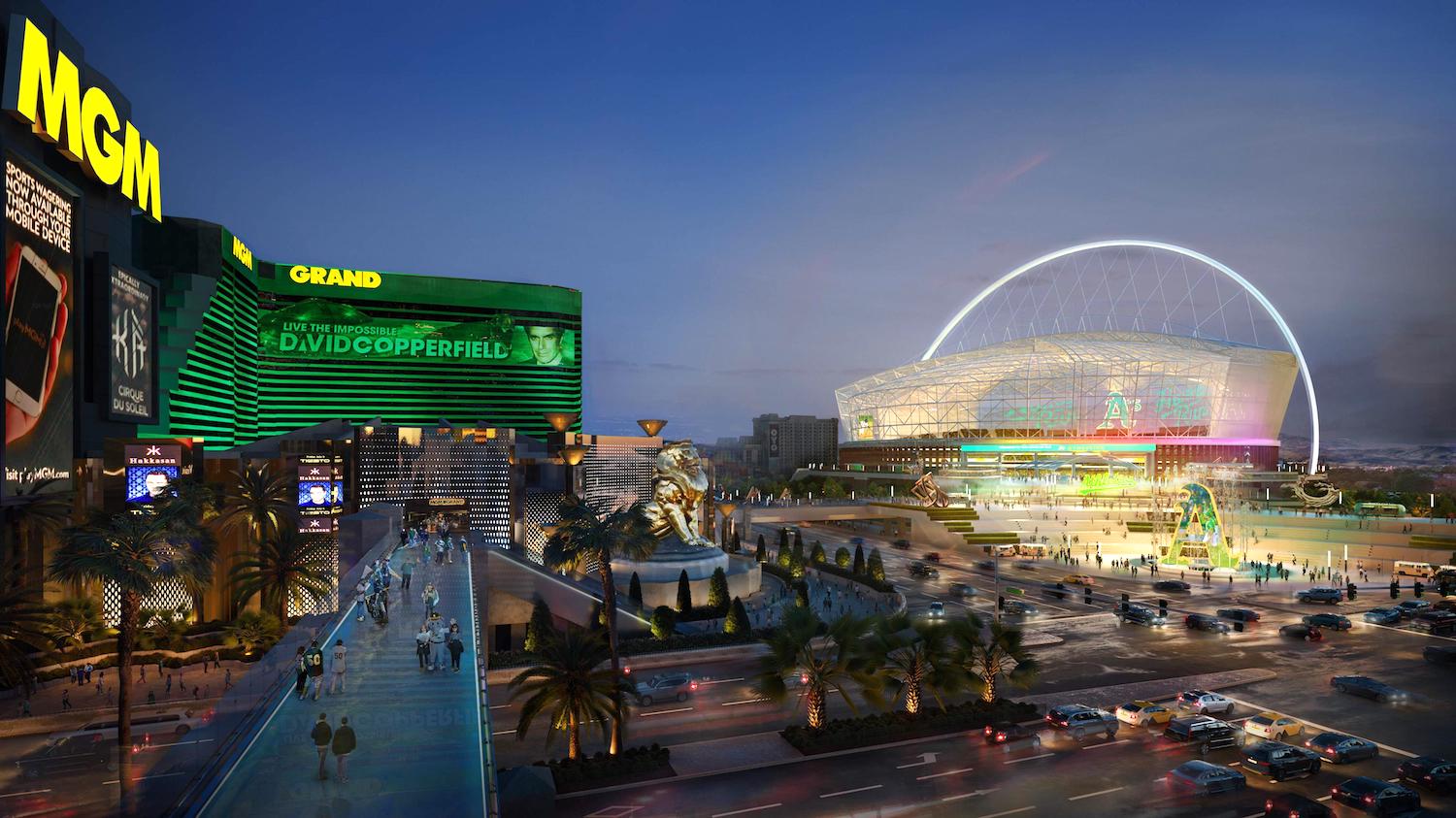The Athletics' proposed ballpark in Las Vegas would feature a variety of seating options, a partially retractable roof, and a fan capacity of 30,000.
The Athletics released the first renderings of the club’s proposed ballpark in Las Vegas on Friday.
The proposal calls for the stadium on nine acres at the Tropicana site on the Las Vegas Strip, according to a press release from The Athletics.
“The ballpark will feature a variety of seating options, a partially retractable roof, and a fan capacity of 30,000, making it one of the most intimate settings in Major League Baseball,” the release said. “The orientation of the playing surface will allow for the outfield to open to the corner of Tropicana and Las Vegas Boulevard.”
The stadium is expected to be used for a range of events, concerts, and community gatherings.

“From the minute we stepped onto the Tropicana site nearly two years ago, it was immediately obvious what a fantastic fit it would be for a new A’s ballpark in Las Vegas,” said A’s director of design and owner of Schrock KC Architecture, Brad Schrock. “The natural orientation of the ballpark creates not only some of the best views and connection to the Las Vegas skyline from the seating bowl but also opens up the ballpark to the corner in a way that creates opportunities for an amazing energetic public space with open and expansive views into the ballpark.”
The plan will feature innovative architecture, sustainability and environmental consciousness, and modern amenities that focus on the peak of excellence in fan experience, the release said.
“We are excited to share our vision for the A’s potential new home. As our first conceptual design, we will continue to refine the look and feel of the ballpark over the next year,” A's President Dave Kaval said. “We hope our project goes beyond a traditional ballpark and serves as a catalyst for community development and engagement. It follows in the footsteps and success of the professional sports teams that come before us, in creating union jobs, stimulating economic growth, and fostering investments in the community.”
Draft bill language for a measure aimed at bringing the Oakland A’s to Las Vegas obtained Friday by The Nevada Independent proposes a state and Clark County-offered public financing package of no more than $380 million to fund a portion of the construction of a $1.5 billion stadium.

Much of the previously announced structure of the public financing package is contained in the draft bill language, including $180 million in transferable tax credits issued by the state and $120 million in bonds issued by Clark County. But publication of the bill language — which could still change before the measure is formally introduced in the Legislature — is the first look at the scope of the financing deal negotiated by the franchise and state and county leaders.
The bill’s language expands the mandate of the Las Vegas Stadium Authority, created in 2016 to oversee and manage Allegiant Stadium, to have the same responsibilities for the A’s new ballpark. The Stadium Authority is managed by a nine-person board.
The bill does not call for new revenue, so passage would only require a simple majority vote – instead relying on a combination of tax credits from the state, county bonds paid off through tax-increment financing (in a format also known as a TIF district) and a 30-year property tax exemption separate from the public financing provided directly for the project. The A’s would also be responsible for any cost overruns, the Independent reported.
As drafted, the bill also requires Clark County to create “a resort corridor homelessness prevention and assistance fund” managed in partnership with the Major League Baseball team and the Nevada Resort Association. The fund would be aimed at reducing homelessness in and around the Southern Nevada resort corridor but would not receive contributions from the Stadium Authority until construction was complete and debt obligations met.
The bill’s $380 million in public financing is roughly $120 million less than the $500 million in public funding the A’s originally sought after announcing a “binding agreement” for a stadium site north of Allegiant Stadium on April 20.
Comments
Use the comment form below to begin a discussion about this content.
Sign in to comment